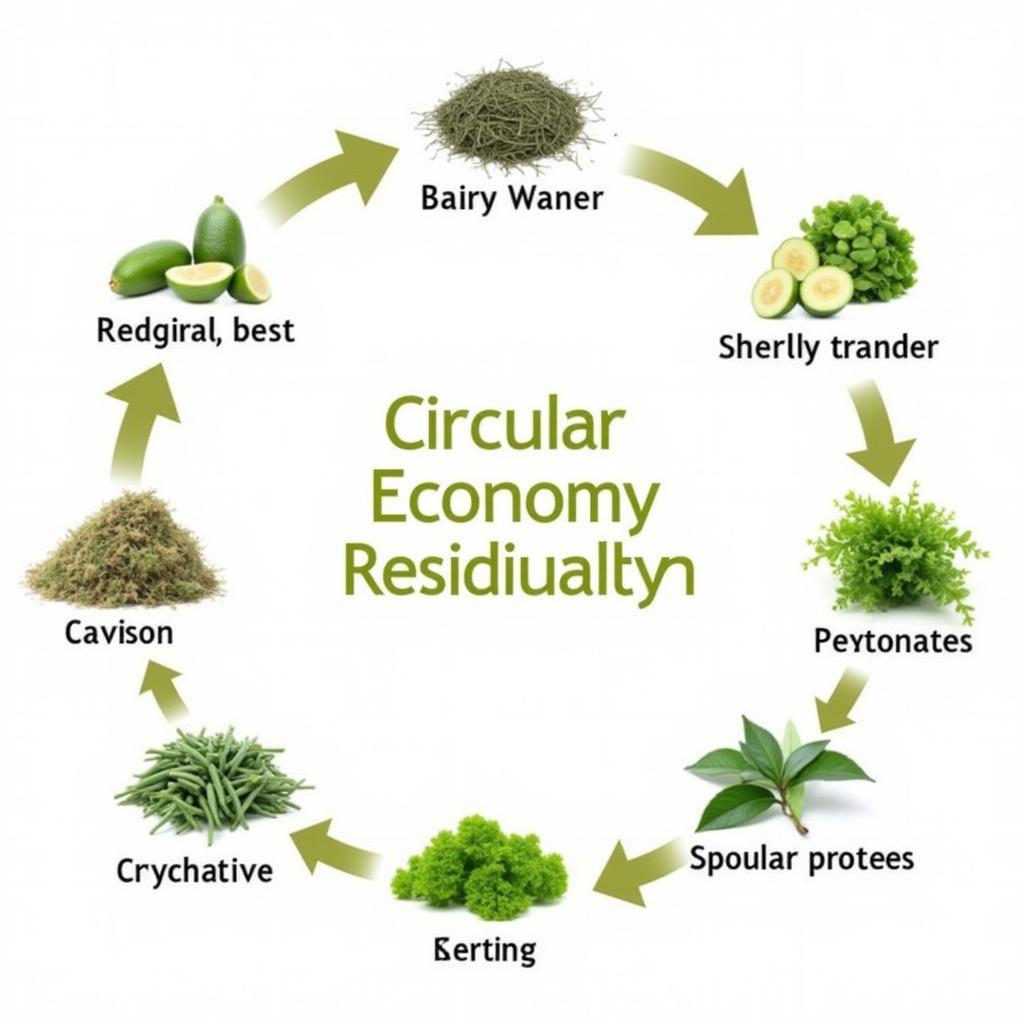Food Processing Residuals, often perceived as mere waste, represent a largely untapped resource with immense potential. In an era grappling with environmental concerns and seeking sustainable solutions, these byproducts are gaining recognition as valuable assets across various sectors.
From Waste to Wealth: The Value of Food Processing Residuals
Food processing residuals encompass a wide range of materials generated during the transformation of raw ingredients into edible products. This includes peels, seeds, husks, pulp, and even expired or unsold food items. While traditionally discarded, these residuals harbor valuable components such as carbohydrates, proteins, fibers, and antioxidants.
 Various food processing residuals
Various food processing residuals
Applications Across Industries:
The potential applications of food processing residuals extend far beyond just animal feed or compost. Here are a few notable examples:
- Agriculture: Residuals like fruit peels and coffee grounds, rich in nitrogen and phosphorus, can be composted to create nutrient-rich fertilizers, improving soil health and promoting sustainable agricultural practices.
- Bioenergy Production: Organic waste from food processing can be converted into biogas through anaerobic digestion, offering a renewable source of energy for heating and electricity generation.
- Pharmaceuticals and Cosmetics: Certain residuals contain bioactive compounds with antioxidant and antimicrobial properties, making them suitable for extraction and utilization in pharmaceuticals and cosmetic products.
Environmental and Economic Benefits
The utilization of food processing residuals offers a compelling case for both environmental sustainability and economic viability.
Environmental Impact:
- Reduced Landfill Burden: By diverting food waste from landfills, we minimize methane emissions, a potent greenhouse gas contributing to climate change.
- Conservation of Natural Resources: Utilizing residuals reduces the need for virgin materials, lessening the strain on natural resources and promoting resource conservation.
- Minimized Pollution: Valorizing residuals reduces the environmental impact associated with the production of synthetic alternatives.
Economic Advantages:
- New Revenue Streams: Food processors can generate additional revenue by selling their residuals as valuable inputs to other industries.
- Cost Savings: Utilizing residuals can help reduce waste disposal costs and create a more circular economy within the food industry.
- Job Creation: The development of new technologies and applications for food processing residuals presents opportunities for innovation and job creation within the green economy.
 Circular economy model for food processing residuals
Circular economy model for food processing residuals
Challenges and Future Directions
Despite the immense potential, several challenges hinder the widespread adoption of food processing residual utilization. These include:
- Logistical Constraints: Efficient collection, transportation, and storage of residuals pose logistical challenges.
- Technological Advancements: Further research and development are crucial for optimizing existing technologies and exploring novel applications.
- Regulatory Frameworks: Clear and supportive regulations are essential to encourage investment and innovation in this sector.
Embracing a Sustainable Future
The future of food processing residuals is bright. By embracing innovative solutions and fostering collaboration among stakeholders, we can unlock the full potential of these often-overlooked resources. The journey towards a more sustainable and circular food system necessitates a paradigm shift – one that views food processing residuals not as waste, but as valuable assets.
Frequently Asked Questions
1. What are some common examples of food processing residuals?
Common examples include fruit and vegetable peels, seeds, husks, pulp, coffee grounds, and even expired or unsold food items.
2. How can food processing residuals contribute to sustainable agriculture?
Residuals like fruit peels and coffee grounds are rich in nutrients and can be composted to create organic fertilizers, improving soil health and reducing reliance on synthetic fertilizers.
3. What are the potential benefits of using food processing residuals for bioenergy production?
Organic waste from food processing can be anaerobically digested to produce biogas, a renewable energy source for electricity and heat generation, reducing reliance on fossil fuels.
4. What are some challenges associated with utilizing food processing residuals?
Key challenges include logistical constraints related to collection and storage, the need for further technological advancements, and the establishment of supportive regulatory frameworks.
5. How can I learn more about specific applications and research initiatives related to food processing residuals?
Numerous resources, including industry publications, research articles, and online databases, provide detailed information on specific applications, technological advancements, and ongoing research in this field.
For further assistance, please contact Mina Cones Food at Phone Number: 02437655121, Email: minacones@gmail.com or visit us at 3PGH+8R9, ĐT70A, thôn Trung, Bắc Từ Liêm, Hà Nội, Việt Nam. Our dedicated customer support team is available 24/7 to address your inquiries.